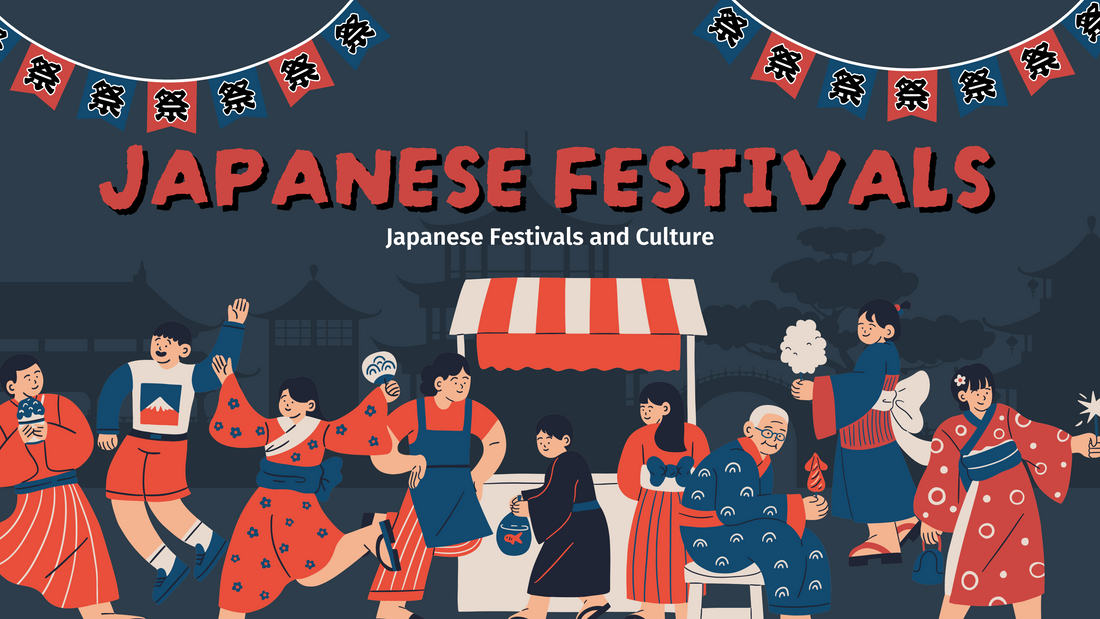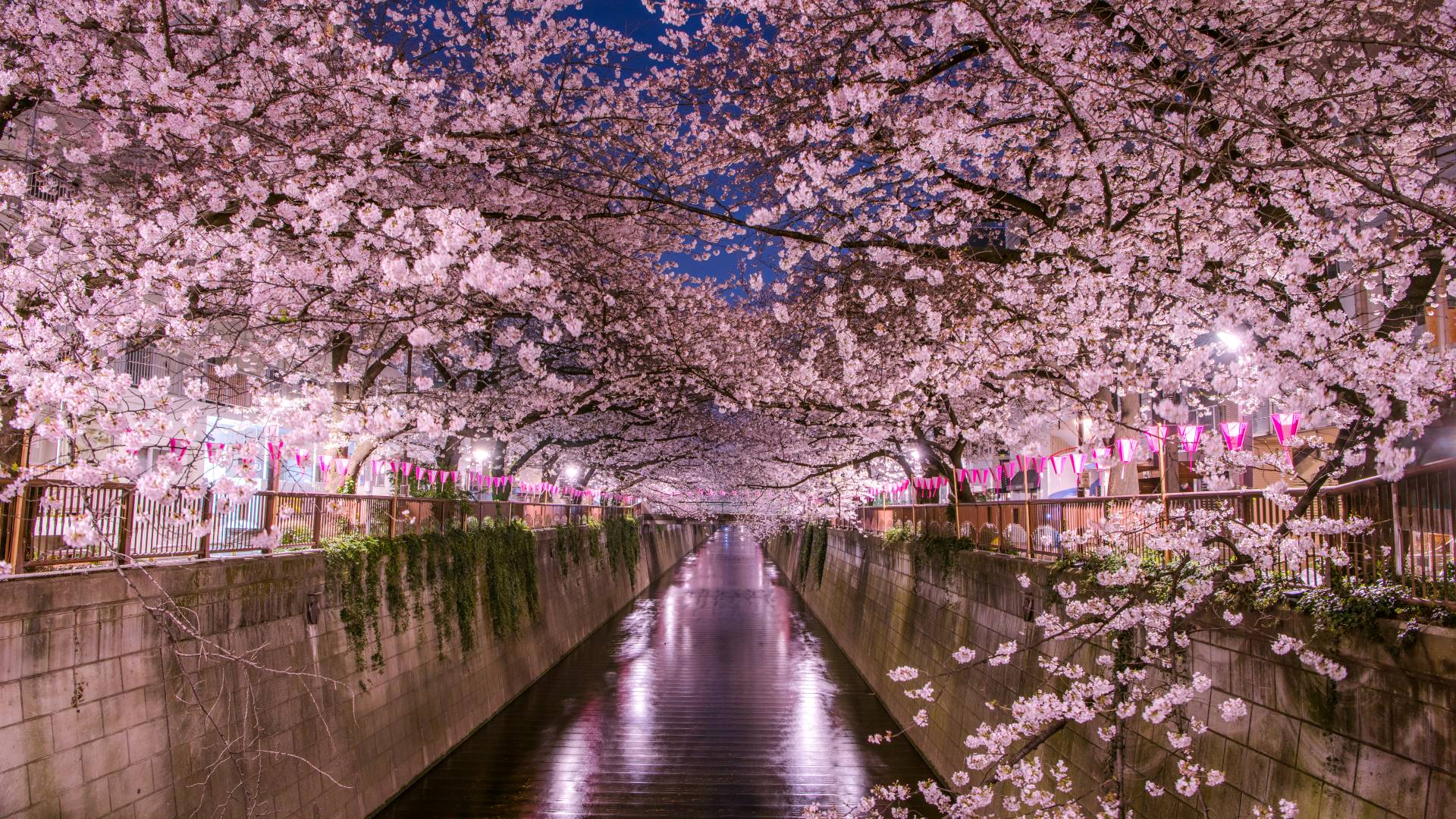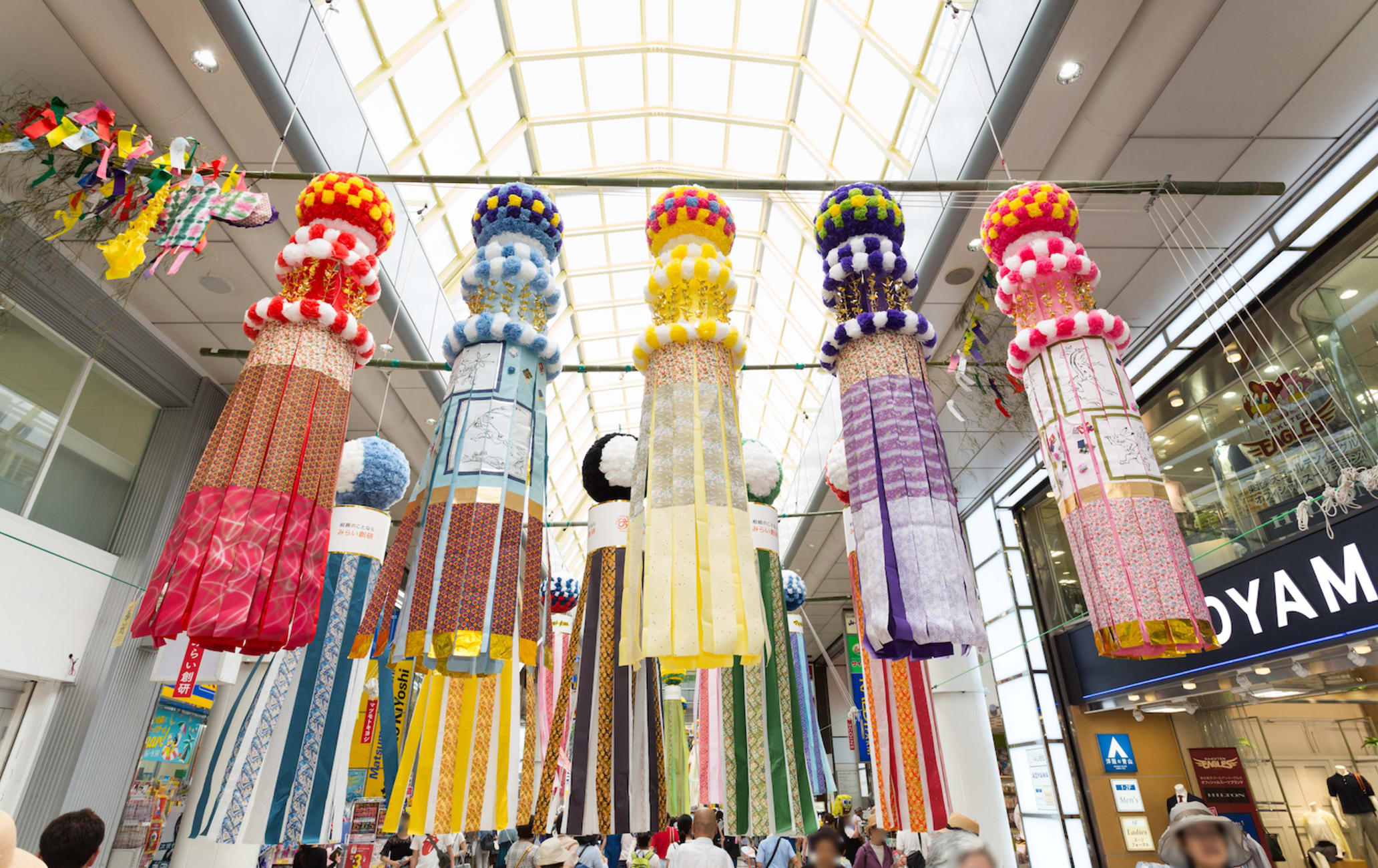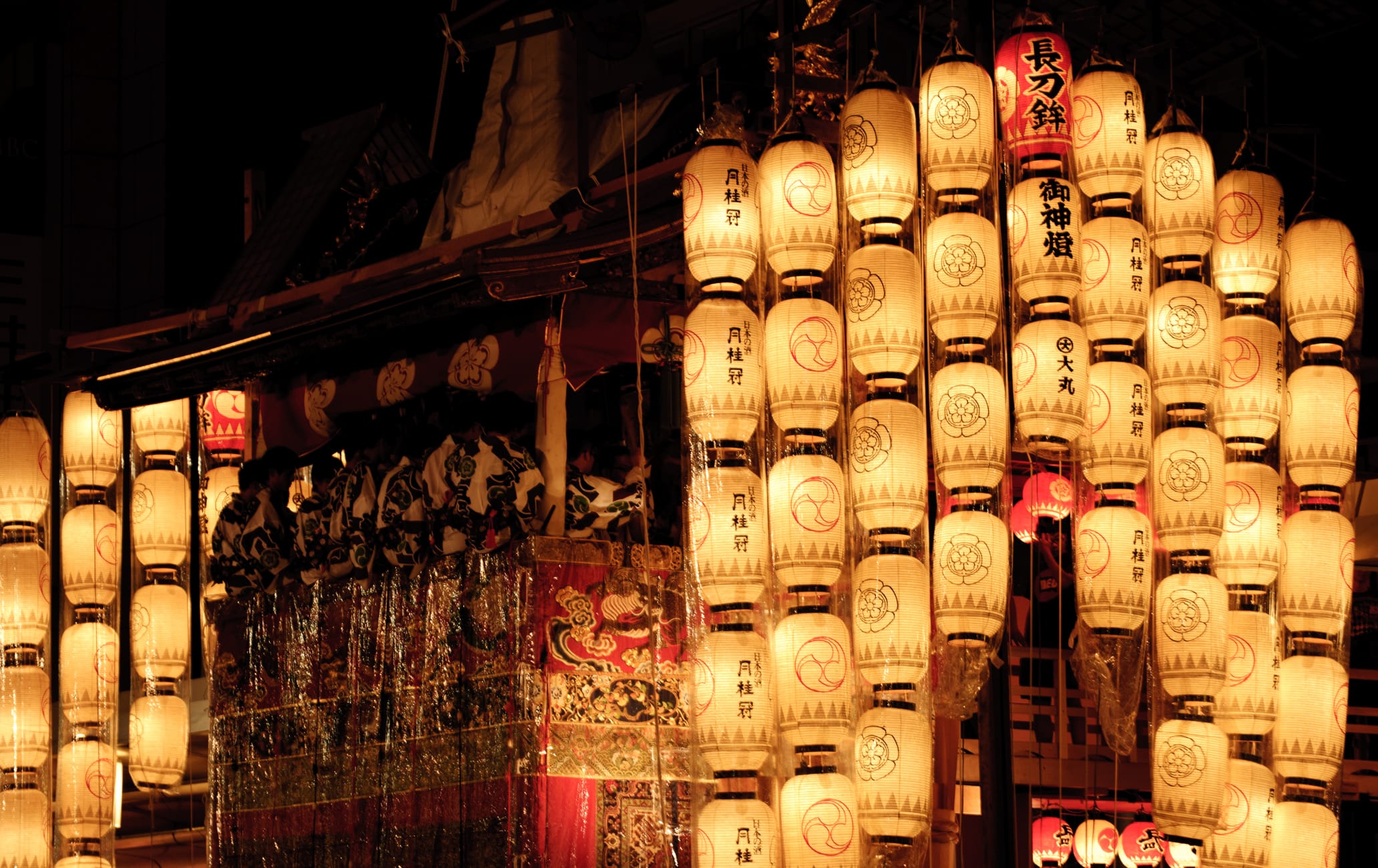
TRADITIONAL FESTIVALS IN JAPAN PART 1
Share
Japan is a country with a rich history and culture, featuring numerous unique traditional festivals held throughout the year. These festivals are not only occasions for the Japanese people to honor long-standing cultural values, beliefs, and history but also opportunities for international tourists to experience and explore the unique aspects of Japanese culture. In this article, CTS will introduce you to some typical and famous traditional festivals in Japan:
Hanami Festival (Cherry Blossom Viewing): This is one of the most important and famous traditional festivals in Japan, taking place in spring when the cherry blossoms are in full bloom, usually from late March to early May, depending on the location and annual weather conditions. The Hanami festival signifies welcoming spring, new beginnings, and the transient beauty of life.

During this time, Japanese people and tourists often gather under the vibrant pink cherry blossom trees in parks, gardens, temples, shrines, or along riverbanks to have picnics, enjoy traditional foods like bento, dango, onigiri, and drink sake. Hanami is not just an occasion to admire the beauty of nature but also a chance for people to gather, socialize, chat, and enjoy the joyful atmosphere of spring.

In the evenings, many Hanami spots are beautifully illuminated, creating a magical and romantic scene. This is also an ideal time to take photos and preserve memorable moments with family and friends.
Tanabata Festival (Star Festival) The Tanabata Festival, also known as the Star Festival, is an important cultural event held annually on July 7th in Japan. The festival originates from a touching love story in Chinese mythology about Orihime (the Weaver Girl) and Hikoboshi (the Cowherd), lovers separated by the Milky Way who are allowed to meet only once a year on this day. To commemorate this special meeting, Japanese people participate in various traditional activities. One of the most popular customs is writing wishes, hopes, and dreams on colorful strips of paper called "tanzaku" and hanging them on bamboo branches. These strips, carrying people's thoughts and aspirations, create a vibrant and meaningful scene throughout the festival.
Additionally, the Tanabata Festival includes other activities such as street parades with lavishly decorated floats, traditional music and dance performances, food stalls offering festival specialties, and fun folk games.
The Tanabata Festival is not just an occasion to celebrate love and reunion, but also a time for people to entrust their wishes and hope for a bright future. The combination of traditional cultural values and a lively festival atmosphere makes Tanabata especially appealing, attracting participation from numerous locals and tourists, both domestic and international.
The Gion Matsuri, one of the three largest and most famous festivals in Kyoto, takes place annually throughout the month of July. The festival's origins date back to the 9th century when locals held ceremonies to appease the gods and pray for health and prosperity.
The highlight of Gion Matsuri is the Yamaboko Junko parade, held on July 17th and 24th. During this parade, visitors can admire the massive Yamaboko and Hoko floats, lavishly decorated with artworks, ornaments, and exquisite tapestries. Each float represents a different district or neighborhood in the city and is pulled by hundreds of men dressed in traditional attire.
Besides the Yamaboko parade, Gion Matsuri features many other events and activities throughout July, including:
-
Yoiyama - Lively Nights Before Yamaboko: On the nights leading up to the grand Yamaboko parade, the area around Yasaka Shrine buzzes with a lively festival atmosphere. The streets become bustling with countless delicious food stalls, fun folk games, and unique traditional art performances. This is a great opportunity to savor unique and enticing local street food. From fragrant grilled dishes, traditional sweets to flavorful noodles and rice dishes, everything is sold at stalls lining the streets. Yoiyama is not just a place to enjoy food but also a chance to immerse yourself in the traditional Japanese festival atmosphere. Performances of traditional dance, song, and musical instruments offer unique and interesting cultural experiences. Additionally, you can participate in traditional folk games, try your luck at lottery stalls, or simply stroll around, taking in the lively and colorful scenery of Yoiyama. With its vibrant atmosphere, rich cuisine, and diverse entertainment activities, Yoiyama will surely leave you with unforgettable memories of the Gion Matsuri. Don't miss the chance to experience one of Japan's most distinctive cultural events!
-
Mikoshi Arai Ritual: Kyoto's Gion Festival is famous for the Mikoshi Arai procession. Annually on July 17th [Note: Mikoshi Arai purification often happens earlier, around July 10th, while the main Mikoshi procession (Shinko-sai) is on the 17th], the sacred Mikoshi portable shrines, representing the city's guardian deities, are carried to the Kamo River. Here, they undergo a purification ceremony in a colorful and solemn traditional ritual. The people of Kyoto believe this ritual helps wash away impurities, praying for peace, luck, and prosperity for the entire city in the coming year. The Mikoshi Arai procession attracts large crowds of locals and tourists. A festive atmosphere fills the air, with the sounds of drums, music, and the cheers of the crowd. This is one of the most important events of the Gion Festival, demonstrating the reverence of Kyoto's people for their deities and their prayers for a good life for the community.
-
Byobu Matsuri (Folding Screen Festival): Throughout July, many homes and shops in Kyoto display precious Byobu folding screens, creating a beautiful and unique sight.
The Gion Matsuri is a significant cultural event in Japan, attracting millions of visitors from around the world. It is an occasion for the people of Kyoto to express pride in their traditions and culture, and also an opportunity for tourists to discover the beauty and uniqueness of this ancient city.
The Obon Festival, held annually in August, is one of the most important festivals in Japan, carrying the meaning of remembering and honoring ancestors. During this time, the Japanese believe that the spirits of the deceased return to visit their families and relatives.
Activities during the Obon festival include:
- Lighting Lanterns: Lanterns are lit everywhere during the festival, especially in front of homes and on family altars, meant to guide the ancestors' spirits back home.
- Bon Odori Dancing: This is a traditional dance performed during Obon, with everyone participating regardless of age. The dance is usually performed around a tall scaffold called a "yagura," where musicians play traditional music.
- Floating Lanterns Down Rivers (Toro Nagashi): At the end of the festival, people float lanterns down rivers or the sea, symbolizing sending the ancestors' spirits back to the other world.
- Cleaning and Decorating Graves: Before the festival begins, Japanese people often clean and decorate their ancestors' graves to welcome them back.
- Food Offerings: Families typically prepare traditional dishes and place them on the altar as offerings to the ancestors.
- Visiting Temples and Shrines: Many people also visit temples and shrines to pray and remember their ancestors.
The Obon Festival is not only an occasion to remember ancestors but also a time for families to reunite and strengthen bonds. It is also an opportunity for tourists to experience Japan's unique traditional culture.
Currently, CTS partners with 3 major brands – Docomo, Rakuten, and Softbank. With numerous dealers and multilingual sales support (including Indonesian, Thai, and more), we help you find the right Wi-Fi and SIM, ensuring a stable internet connection anytime, anywhere in Japan. As a trusted partner of Japan's leading telecommunication carriers, CTS is committed to providing genuine products, the best signal quality, and extensive nationwide coverage. Our dealer network allows you to easily pick up your pocket Wi-Fi device or quickly purchase a Japan SIM card. Furthermore, the simple registration process, along with multilingual support (Vietnamese, English, Indonesian, Thai, etc.), helps international customers in Japan easily access and use our services without any barriers. Let CTS accompany you everywhere you go in Japan.


